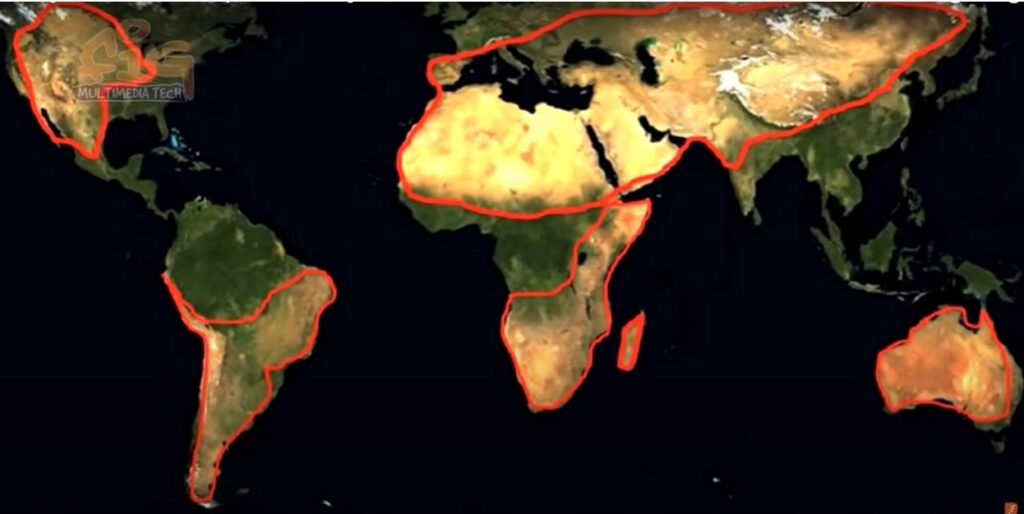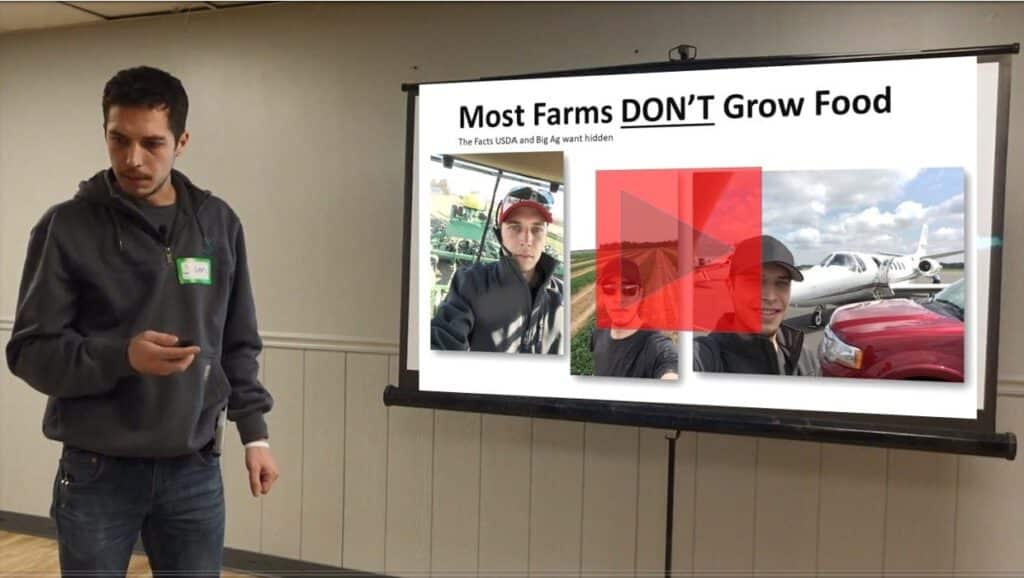Corn isn't food
Nine unpopular facts USDA and Big Ag don’t want you to know
By Jason Wisniewski
Occasionally, I get to share my understanding of the agricultural industry with farmer-led organizations like this recent seminar held by the Minnesota Soil Health Coalition and the Isaak Walton League.
The seminar was a good opportunity for me to apply what I had learned from a YouTube video I posted about tillage a few months ago. As of today, the tillage video has over 93,000 views and almost 900 comments. That sort of response really surprised me and is highly unusual traffic for my channel. I recorded the video largely to vent my frustrations and share some soil biology basics. Click here to view ‘How tillage destroys farms and communities’. I think it became a challenging discussion (or at least entertaining) for everyone involved.
The Industrial Ag Dupe
My most recent talk was much broader. For the past 15 years, I have been unraveling a web of deception cast on farmers and rural communities by the United States Department of Agriculture (USDA) and their bosses in the Industrial Ag lobby. Through my experiences on the farm, work in the industry, and my reviews of the work from the likes of the Savory Institute, Understanding Ag, and the Soil Health Academy, I’ve learned the truth of the (organic) matter: Farmers and consumers have been duped.
Our farms should be much more profitable, consumers should be much healthier, and our water much clearer. We degrade our soils to produce vast corn and soybean monocultures. This process enables a vast tax-money laundering scheme industrial ag corporations use to prey upon farmers and rural communities. As a result, two-thirds of the world's land is actively desertifying, and with current practices, we could lose our remaining topsoil in as little as another 60 years. But, with regenerative agriculture and the Six Soil Health Principles we can reverse this trend. Understanding soil biology is the only way forward.

During the talk, I hone in on what led me to question the narrative that “America’s large corporate farms feed the world.” USDA, Industrial Ag, and corporate farms have used fear of human starvation to justify their destructive policies and products for decades. The result has been declining rural economies, sky-rocketing rates of chronic disease, polluted waters, and 75 billion tons of topsoil lost each year.
We dive into the data and discover that, of the 15 billion bushels of corn produced in America each year, 62% goes to ethanol, industrial products, and junk food. According to the USDA, the remaining 38% is an ambiguous combination of livestock feed and a catch-all category named “residual use.” So, we don’t actually know how much goes to livestock for meat production through USDA reports. We do know that only 1/3 of the calories animals obtain from corn actually make it to human calories. Corn is a highly inefficient method to feed livestock and it only worsens as corn’s protein content diminishes due to dead soils. We’re talking about the crop that dominates the agricultural landscape of the world here. We get virtually no nutritional value from it… and it is costing us dearly.
Unpopular Facts
Most of the 900 comments I received regarding the tillage video centered around just a few recurring misconceptions about soils and our food system. To rebut them, I presented nine unpopular facts that conventional agriculture adherents can’t seem to stomach:
- Plant growth is a biological process, not a chemical one
We now know the NPK theory of the 1850s is wholly inadequate for people who want to grow living things. Sure, chemistry matters in the bio-chemical reactions of cells. But the agricultural industry has dismissed the vast importance of biology in favor of chemistry and geology for hundreds of years.
- Governments cause starvation, not a lack of food
Today, starvation is the product of bad government policy not a limitation on earth’s ability to produce food. Globally, we produce enough “food” to feed 14 billion people and we are terribly inefficient at it.
- Corn and soy are industrial products, not food
Earlier we broke down the corn supply. You’ll find soybean oil in almost every highly processed food-like substance. You’ll also find it in biodiesel, plastics, and road treatments. Does anyone think it odd that soy is spared to make plastic happy meal toys when the world is on the edge of starvation?
- Plants can gather 97.5% of their matter from the atmosphere alone
In 1634, Jean Baptist Van Helmont was arrested for studying plants. He filled a pot with soil, weighed it, and planted a willow tree. The experiment ran for five years with Helmont adding only water to the pot. At the end of the experiment, he removed the willow tree, dried, and weighed the soil, which revealed that 97.5% of the weight remained. Recent research by Dr. Christine Jones on the liquid carbon pathway reveals more of what we know about this process today.
- Plants rely on microbes to access nutrients
Plants don’t simply absorb NPK through their roots as we were taught in 2nd grade. We are just beginning to understand some of the complex ways plants are fed by microbiology through processes like rhizophagy.
- Weeds (forbs) can be controlled with cover crops, not tillage or chemicals
Some living cover crops, like cereal rye, exude allelopathic compounds that suppress weeds. Cover from residue and cover crop canopies eliminates the sunlight fledgling forbs rely on. Tillage stirs the latent seed bank and herbicide kills biology while creating resistant varieties.
- Soil type does not matter, biology can build over it
Allan Savory and Alejandro Carrillo are building topsoil in deserts. Wherever plants can grow, topsoil can be formed. Consider how grass overtakes sidewalks and old fence lines.
- Today’s crops have a fraction of the nutrition as 20-50 years ago
The protein content and test weights of commodity grain continue to fall. Farms produce fewer nutrients per acre than ever before. To get the vitamins a single orange offered 60 years ago, eight oranges would need to be eaten today.
- 70% of farm revenues derive directly or indirectly from government subsidies
It is downright scary to consider how reliant our farming communities have become on government programs. Crop insurance is one of the most direct subsidies and trillions of taxpayer dollars pour into downstream markets like ethanol plants. All of this government funding artificially props up commodity and land values.
Observations and Ideas
My video presentation includes images of observations I’ve made in my community and on our farms. We’ve made progress in the last few years by implementing the Six Soil Health Principles where we can. We have a long way to go and and some tough conversations to have. In the talk, I offer some ideas to arrange rental agreements that could encourage tenants to learn about more profitable ways to farm.
I hope you’ll share this information with everyone you know who eats food. We all must take responsibility for what enters our bodies and hold our food producers and policy-makers accountable. As producers, it’s time to take the profits back from the Industrial Ag Lobby and work with the power of nature's systems.

